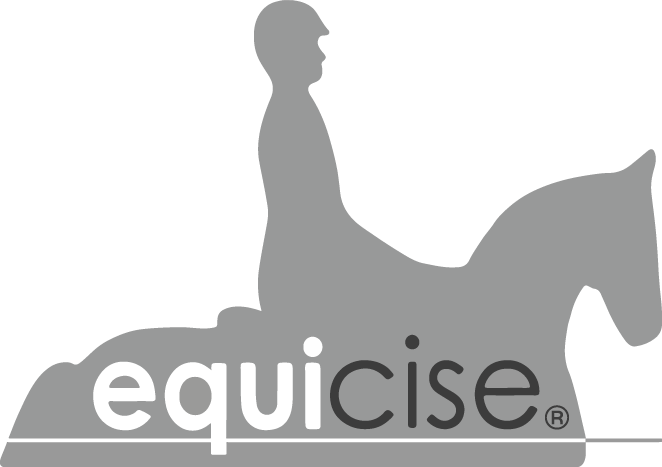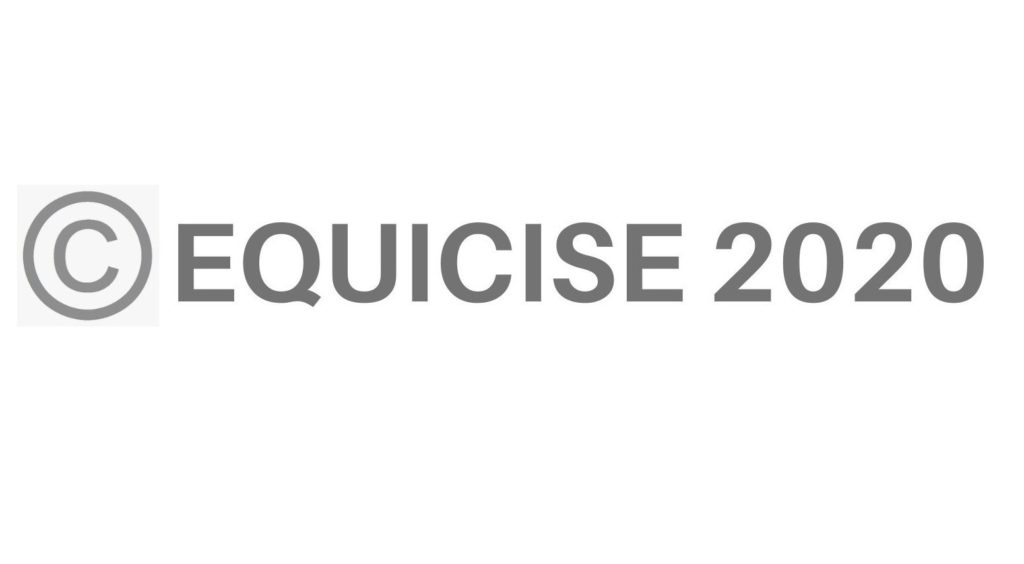14 Jun 7. How to use a whip correctly
E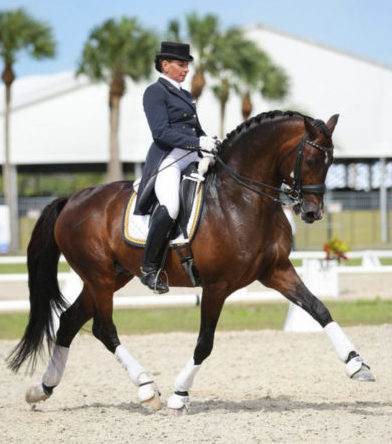 very rider who carries a whip, whether a short stick or schooling whip, should be aware that this additional aid is to be used only to reinforce the message sent to your horse by your legs and not as an alternative or as a punishment.
very rider who carries a whip, whether a short stick or schooling whip, should be aware that this additional aid is to be used only to reinforce the message sent to your horse by your legs and not as an alternative or as a punishment.
You may think there can be little skill in the use of a whip, but you would be very wrong – timing and the force with which it is applied are critical, as is the ability to tap the horse in the right place without affecting your rein contact, so it is important to recognise and learn when and how a stick should be used.
Obviously, we would all prefer our horses to respond quickly and correctly to the natural aids that we give, but if your horse does not, even if you think you have given a clear signal of what you are asking for, it may be appropriate to use your whip as a reminder.
Timing is important – if your horse is unresponsive to the pressure your leg is applying, you need to use the whip immediately so it associates it with your original leg aid and does not view it as some random act with no meaning. If you find a single tap does not work and that it requires two to achieve the desired reaction, next time you need to use a stick you should give a firmer tap, but still making sure you avoid scaring or upsetting your horse.
And while the stick can be a reinforcement to leg aids that are being ignored by your horse, you need to ensure that while applying the whip, you are able to keep your hands still and are not pulling your horse’s head to one side. The trick is to ride with your stick held across your thigh, so it is easy to use when required, at which point you should move it about one inch away from the horse and give a flick of the wrist so that it connects with your horse’s side.
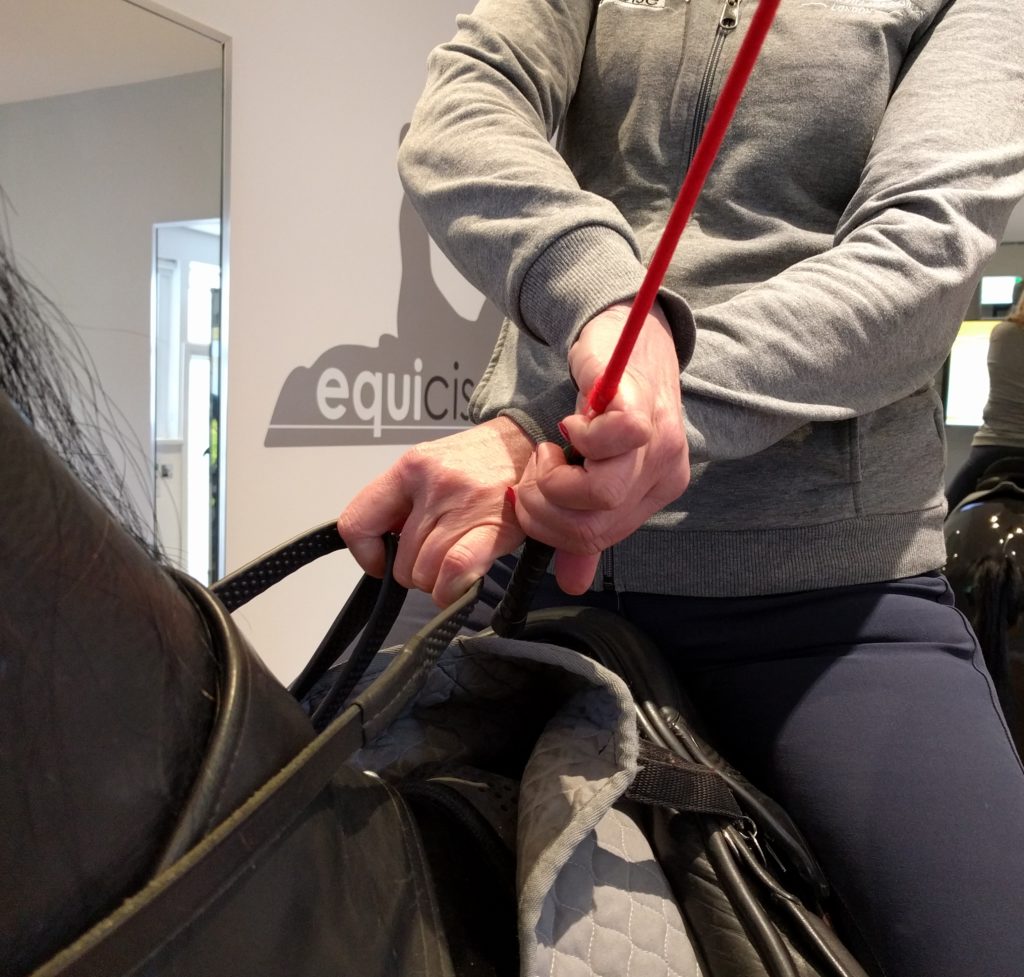 You also need to be able to swap your stick from one hand to the other without compromising your position or rein contact. Imagine you wish to swap the whip from your right to your left hand: holding the reins with both hands, you swing the stick with your right hand (thumb on top) in an arc up and over to the other side and then, keeping hold of both reins with your right hand, grasp the stick with your left hand and return it to the normal position, lying across your thigh, with both hands once more holding the reins. This process, once perfected, will allow you to retain your rein contact and minimise, if not eliminate, any unhelpful fumbling.
You also need to be able to swap your stick from one hand to the other without compromising your position or rein contact. Imagine you wish to swap the whip from your right to your left hand: holding the reins with both hands, you swing the stick with your right hand (thumb on top) in an arc up and over to the other side and then, keeping hold of both reins with your right hand, grasp the stick with your left hand and return it to the normal position, lying across your thigh, with both hands once more holding the reins. This process, once perfected, will allow you to retain your rein contact and minimise, if not eliminate, any unhelpful fumbling.
Learning the correct and effective application of a whip and achieving an effortless swap from one hand to the other takes time and practice and it is not always easy or advisable on a real horse. A session on the EQUICISE, however, allows you to practise for as long as you like without risking upsetting your horse. It is essential to be 100 percent accurate in how you use a whip as otherwise it is unkind and confusing for your horse. Timing is paramount — all you may need is a light tap in the right place at the right time — but this can be hard to achieve if you are also focused on finding your balance at different paces or if you are unfamiliar with what you are trying to achieve. You may also find it hard to use a whip without pulling back on your horse’s mouth, thereby giving him mixed signals: go and stop at the same time.
The EQUICISE allows you to continue practising until you have mastered the skill of using the whip correctly as a reinforcement of your leg aids at all paces. You can work on perfecting your technique with a schooling whip, which should not require you to take your hand off the rein, or with a short whip, which necessitates putting both reins in one hand and applying it quickly and efficiently behind your leg before swiftly returning your hand to the reins again. The mirrors that surround the EQUICISE enable you to check that you are being effective in the placement of the whip while feedback from the rein sensor will show whether you have inadvertently pulled back on the horse’s mouth. And of course you can carry on until you get it right with no worries about causing any discomfort or confusion as you cannot upset the EQUICISE!
Book a LESSON on the EQUICISE and ask your Instructor to focus on helping you correctly use artificial aids.
Practise this on the equicise simulator
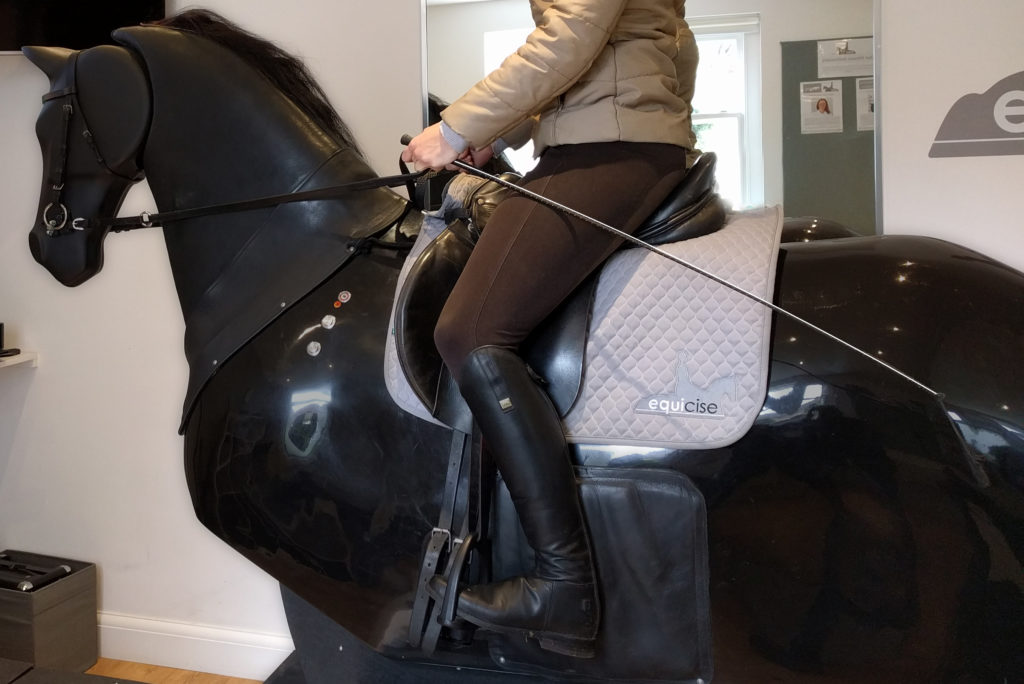
Use ‘Dressage Test’ setting. Press reset. Ride the horse on the fields around the arenas in walk to start with. Practise using both legs on sensor 2, a light squeeze first and then a stronger leg aid and then practise using the schooling whip, timing it to reinforce your leg aid. Look in the mirrors to check that you are using your whip in the correct place. Check that the rein sensor lights don't light up when you are using the whip or this will mean that you are pulling back on the mouth. Repeat the exercise in walk, trot and canter and practise changing the whip over in walk, trot and canter. You can also practise with a jumping whip, putting your reins in one hand and using the stick behind your leg as quickly and effectively as possible

